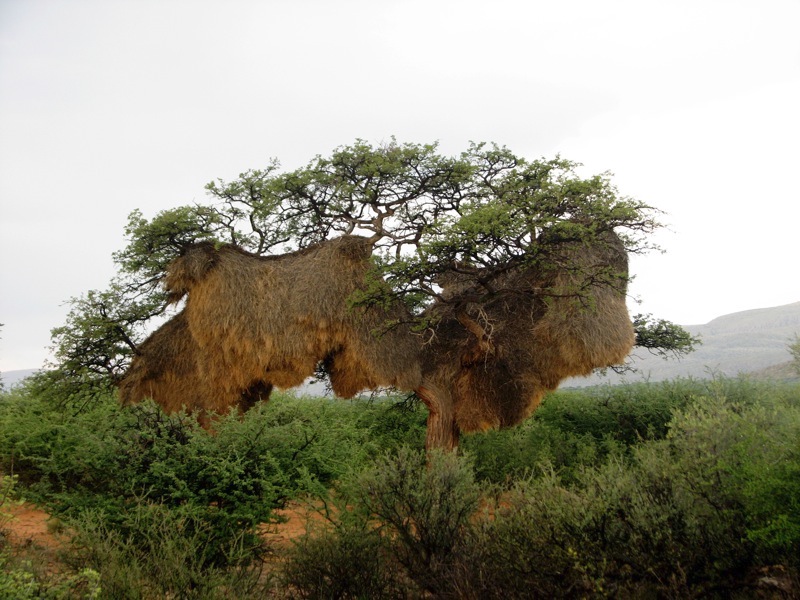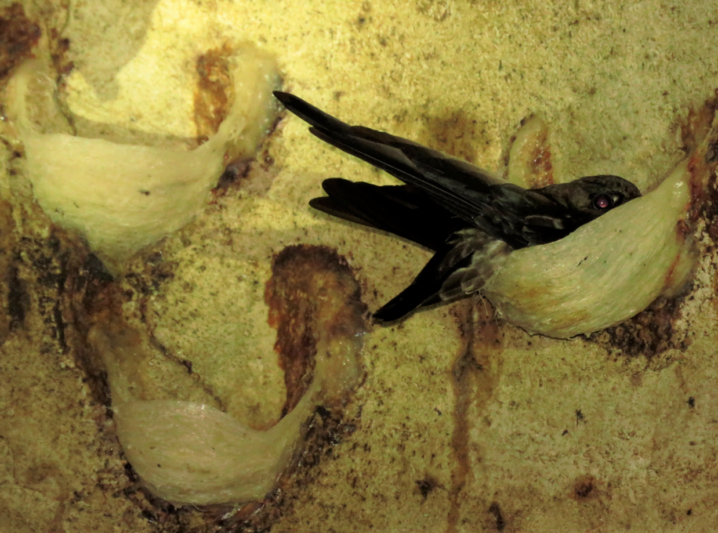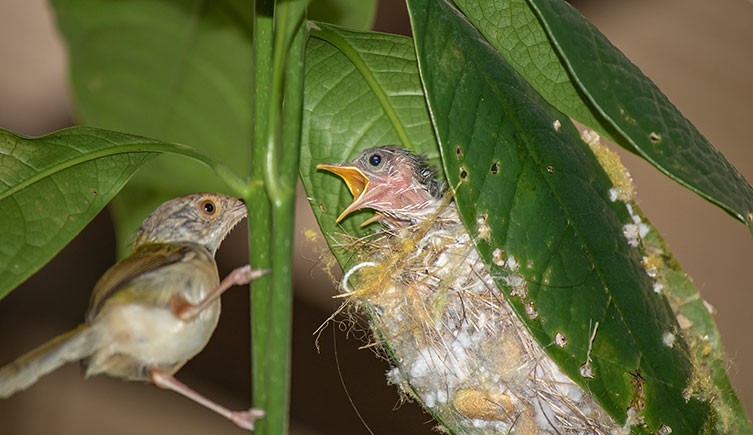Nature’s Architecture: The Most Beautiful Bird Nests in the World – By Malsha – eLanka

When we think of architecture, we often picture towering skyscrapers, grand palaces, or delicate temples. Yet, some of the most ingenious and beautiful structures are not man-made at all—they are created by birds. Across the world, bird nests showcase a dazzling variety of shapes, sizes, and designs, each crafted with skill and purpose. From intricate woven homes that look like works of art to massive communal structures that last for decades, these nests are testaments to nature’s craftsmanship.
In this article, we explore some of the most beautiful and fascinating bird nests in the world.
1. The Weaver Bird’s Hanging Masterpieces
Image Source : kfbg.org
Few bird nests are as instantly recognizable and admired as those of the weaver birds. True to their name, weavers are master artisans, crafting intricate woven nests using grass, reeds, and strips of leaves. These nests often dangle gracefully from tree branches, swinging in the breeze like lanterns.
Male weavers painstakingly construct these nests to attract mates. The quality of the weaving, the neatness of the structure, and its strength are all factors that females evaluate before choosing a partner. In some species, such as the Baya Weaver found in South Asia, the nests feature long tubular entrances designed to protect against predators like snakes.
What makes these nests so beautiful is their elegance and symmetry, as well as the communal sight of dozens of woven nests hanging together from a single tree, turning it into a living art gallery.
2. The Hummingbird’s Tiny Jewels
Image source : hidden-insite.com
At the opposite end of the scale from the weavers are the delicate nests of hummingbirds, the smallest nests in the world. Often no bigger than a walnut, these nests are exquisite little cups made from plant down, moss, spider silk, and lichen.
Hummingbirds use spider silk to bind their nests, allowing the structure to expand as their chicks grow. To camouflage their nests, they cleverly decorate the outer surface with lichens, moss, or bark, blending them seamlessly into their surroundings.
The beauty of these nests lies not only in their miniature perfection but also in their ingenious functionality. Watching a hummingbird hover as it adds tiny pieces to its nest is like witnessing a jeweler at work.
3. The Sociable Weaver’s Apartment Complexes
Image source : birdnote.org
While most birds build individual nests, the Sociable Weaver of Southern Africa takes communal living to a whole new level. Their nests are massive, sprawling structures that can house hundreds of birds at once—essentially an avian apartment complex.
Built from dry grass and twigs, these nests can weigh over a ton and last for decades. Each pair of birds builds and maintains its own chamber within the structure, but the overall nest provides collective benefits like insulation from extreme heat and cold, and protection against predators.
Viewed from afar, these giant nests look like oversized haystacks hanging from acacia trees or utility poles. They may not have the elegance of a weaver bird’s hanging creation, but their size, complexity, and durability make them some of the most impressive nests on Earth.
4. The Swifts’ Saliva Nests
Image Source : worldlandtrust.org
One of the more unusual nests in the world belongs to the Edible-nest Swiftlet, found in Southeast Asia. These small birds create nests entirely out of hardened strands of their own saliva, attaching them to the walls of caves.
While their nests may not appear traditionally beautiful, they are remarkable for their delicate, almost crystalline structure. Their value is further enhanced by their use in the famous delicacy bird’s nest soup, prized in Chinese cuisine. Collecting these nests, however, has raised concerns about sustainability and the impact on swiftlet populations.
Beyond their culinary association, the nests are a reminder of the diversity of materials and techniques birds employ in their homes.
5. The Tailorbird’s Stitched Leaves
image Source : .nhm.ac.uk
Few birds demonstrate ingenuity like the Tailorbird of Asia, which literally “sews” its nest. Using its sharp beak as a needle, the tailorbird pierces the edges of large leaves and stitches them together with plant fibers, spider silk, or cotton. The result is a cradle-like nest hidden within the folds of greenery.
The precision with which tailorbirds create these stitched homes is astounding. They even tie knots with their fibers, ensuring the structure holds firmly. These nests not only showcase practical engineering but also camouflage beautifully among the leaves, keeping chicks safe from predators.
Such natural sewing skills inspired Rudyard Kipling’s description of the tailorbird in The Jungle Book.
6. The Oropendola’s Long Hanging Baskets
Image Source : facebook
In the rainforests of Central and South America, the Oropendola creates long, pendulous nests that hang like woven baskets. These nests, often up to two meters in length, dangle in clusters from high branches, swaying dramatically in the wind.
The colonies of oropendolas sometimes build dozens of these nests close together, creating a stunning display of golden weavings. The long entrance tubes serve a defensive purpose, making it difficult for predators like monkeys and snakes to reach the chicks.
When viewed in the rainforest canopy, these nests resemble nature’s chandeliers, adding beauty to an already vibrant ecosystem.
7. The Bald Eagle’s Towering Aeries
Image Source : ourjourneywestward.com
On the grand scale of bird architecture, the Bald Eagle claims the title for some of the largest nests. Eagles build massive structures, called aeries, high in tall trees or on cliffs near water. Made from large sticks and lined with softer material, these nests can measure over four meters across and weigh several hundred kilograms.
Eagles return to the same nest year after year, adding new material each breeding season, causing the structure to grow larger with time. These aeries stand as symbols of strength and endurance, often used for decades by successive generations.
While not delicate or ornate, their sheer scale and majesty earn them a place among the world’s most impressive bird nests.
8. The Flamingo’s Mud Towers
Image Source : researchgate
In stark contrast to the woven or hanging nests of other birds, flamingos build small towers of mud. Rising about a foot above shallow water, these cone-shaped nests protect the eggs from flooding.
A single egg is laid at the top of each mud mound, and both parents take turns incubating it. What makes these nests beautiful is not the structure itself, but the sight of thousands of mud towers together in a flamingo colony. With the elegant pink birds tending to their nests, the spectacle becomes one of nature’s most breathtaking scenes.
The Beauty of Bird Architecture
Bird nests are not just shelters for eggs and chicks; they are marvels of instinct, creativity, and survival. Each species has evolved unique methods and materials to build the perfect home for its young. From the intricate weaving of the baya weaver to the skyscraper-like aeries of eagles, these nests demonstrate remarkable diversity.
Beyond their biological function, bird nests inspire us with their artistry. They remind us that beauty is not only found in what humans create but also in the quiet, persistent work of nature’s creatures. In their nests, birds weave together strands of survival and artistry, creating some of the most beautiful homes in the natural world.



.jpg)

























